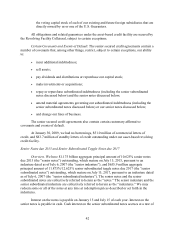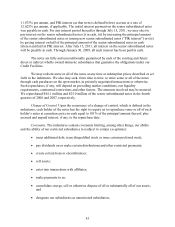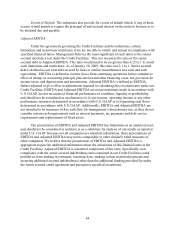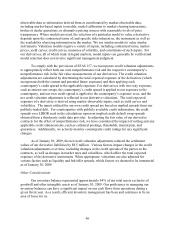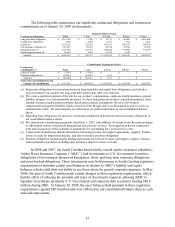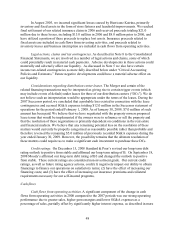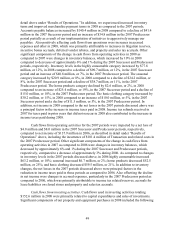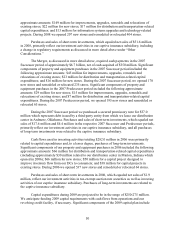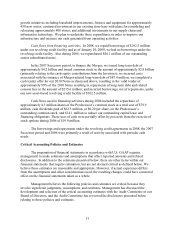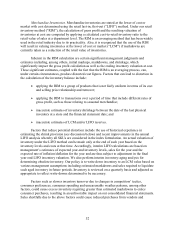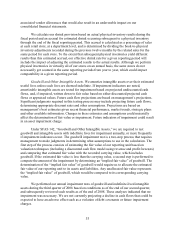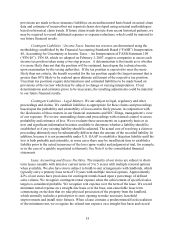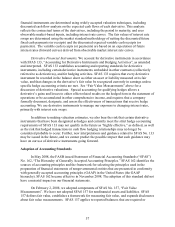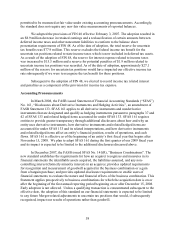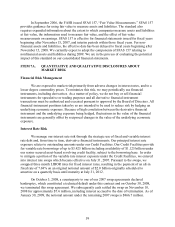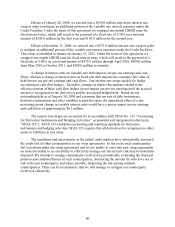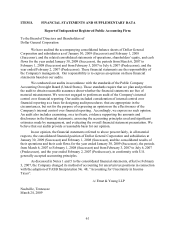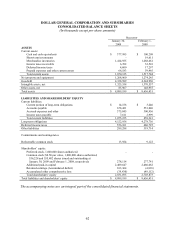Dollar General 2008 Annual Report Download - page 54
Download and view the complete annual report
Please find page 54 of the 2008 Dollar General annual report below. You can navigate through the pages in the report by either clicking on the pages listed below, or by using the keyword search tool below to find specific information within the annual report.52
Merchandise Inventories. Merchandise inventories are stated at the lower of cost or
market with cost determined using the retail last-in, first-out (“LIFO”) method. Under our retail
inventory method (“RIM”), the calculation of gross profit and the resulting valuation of
inventories at cost are computed by applying a calculated cost-to-retail inventory ratio to the
retail value of sales at a department level. The RIM is an averaging method that has been widely
used in the retail industry due to its practicality. Also, it is recognized that the use of the RIM
will result in valuing inventories at the lower of cost or market (“LCM”) if markdowns are
currently taken as a reduction of the retail value of inventories.
Inherent in the RIM calculation are certain significant management judgments and
estimates including, among others, initial markups, markdowns, and shrinkage, which
significantly impact the gross profit calculation as well as the ending inventory valuation at cost.
These significant estimates, coupled with the fact that the RIM is an averaging process, can,
under certain circumstances, produce distorted cost figures. Factors that can lead to distortion in
the calculation of the inventory balance include:
• applying the RIM to a group of products that is not fairly uniform in terms of its cost
and selling price relationship and turnover;
• applying the RIM to transactions over a period of time that include different rates of
gross profit, such as those relating to seasonal merchandise;
• inaccurate estimates of inventory shrinkage between the date of the last physical
inventory at a store and the financial statement date; and
• inaccurate estimates of LCM and/or LIFO reserves.
Factors that reduce potential distortion include the use of historical experience in
estimating the shrink provision (see discussion below) and recent improvements in the annual
LIFO analysis whereby all SKUs are considered in the index formulation. An actual valuation of
inventory under the LIFO method can be made only at the end of each year based on the
inventory levels and costs at that time. Accordingly, interim LIFO calculations are based on
management’ s estimates of expected year-end inventory levels, sales for the year and the
expected rate of inflation/deflation for the year and are thus subject to adjustment in the final
year-end LIFO inventory valuation. We also perform interim inventory-aging analysis for
determining obsolete inventory. Our policy is to write down inventory to an LCM value based on
various management assumptions including estimated markdowns and sales required to liquidate
such aged inventory in future periods. Inventory is reviewed on a quarterly basis and adjusted as
appropriate to reflect write-downs determined to be necessary.
Factors such as slower inventory turnover due to changes in competitors’ tactics,
consumer preferences, consumer spending and unseasonable weather patterns, among other
factors, could cause excess inventory requiring greater than estimated markdowns to entice
consumer purchases, resulting in an unfavorable impact on our consolidated financial statements.
Sales shortfalls due to the above factors could cause reduced purchases from vendors and


